You know me. I’m a simple soul. I see hot water and I bathe in it. And in Iceland, hot water is abundant because it literally comes out of the ground and on this trip, I made my first visit to Krauma, a geothermal spa in the west coast region which has been on my to-do list for more than six years. The name means “simmer”, by the way.
The reality is that if you’ve got spare hot water, you can rinse tourists in it. I speak as a tourist who will jump into any geothermal pool I can find! The excuse, though, is that it’s about connection to the landscape, to the water. The Blue Lagoon and Nature Baths make as much as they can of the mineral-rich water while trying not to say that’s it’s run-off from the power stations next door. Fontana has built steam baths over the natural vents in the lakeside and then paired this raw heat with some unusually clean & clinical tiled pools. The Secret Lagoon is fed by a collection of geysirs and hot springs around its perimeter and made something of a feature of them.

Krauma’s USP is also its connection to the natural hot springs; in this case Deildartunguhver, Europe’s biggest hot spring, a stream of violently bubbling and exploding water running around a small hillock of its own building, issuing enough steam to see it from the campsite a mile or two away in the valley opposite where I started writing this. The spring is front and centre – its six hot pots are arranged in a little courtyard where black walls funnel the views from the front pot right over the hot spring bubbling away.

If you’ve read any of my other posts about spas and lagoons in Iceland, you may have noticed the tone is a little different here. I like Krauma and it was definitely a bucket-list item – I cut an article out of the Grapevine in 2016 when it was still being built to remind me to go and visit when it was done and it’s taken six years! – but even I, as a huge geothermal fan, can’t help noticing that… well, hasn’t Krauma just taken what you get at your local pool, painted it black and quadrupled the price?
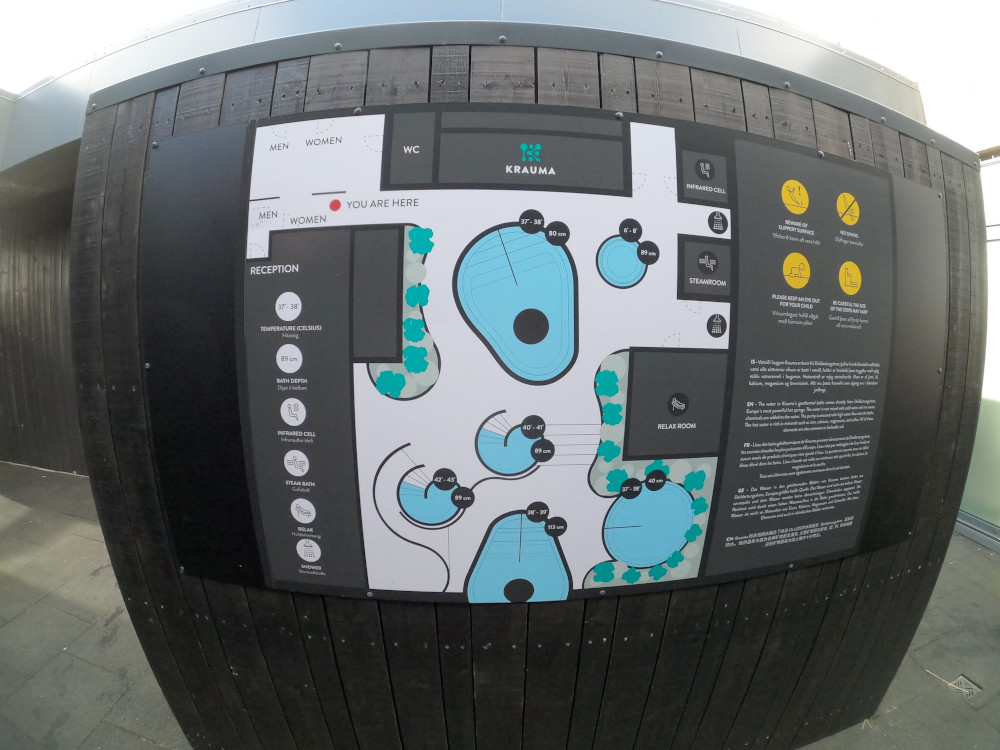
Part of the fun of a lot of the other spas is the lagoon aspect, a pool large enough to swim in and deep enough to not kick the bottom on every stroke. You can float. You can move around. When you take that away and replace it with an assortment of hot pots in various temperatures and depths, somehow you break the spell that you’re getting more than you would at the local pool. Even the “eyes forward, look at Deildartunguhver, look at how our hot water is coming straight from the ground less than 100m away!” can’t quite disguise that there isn’t actually anything very special here.
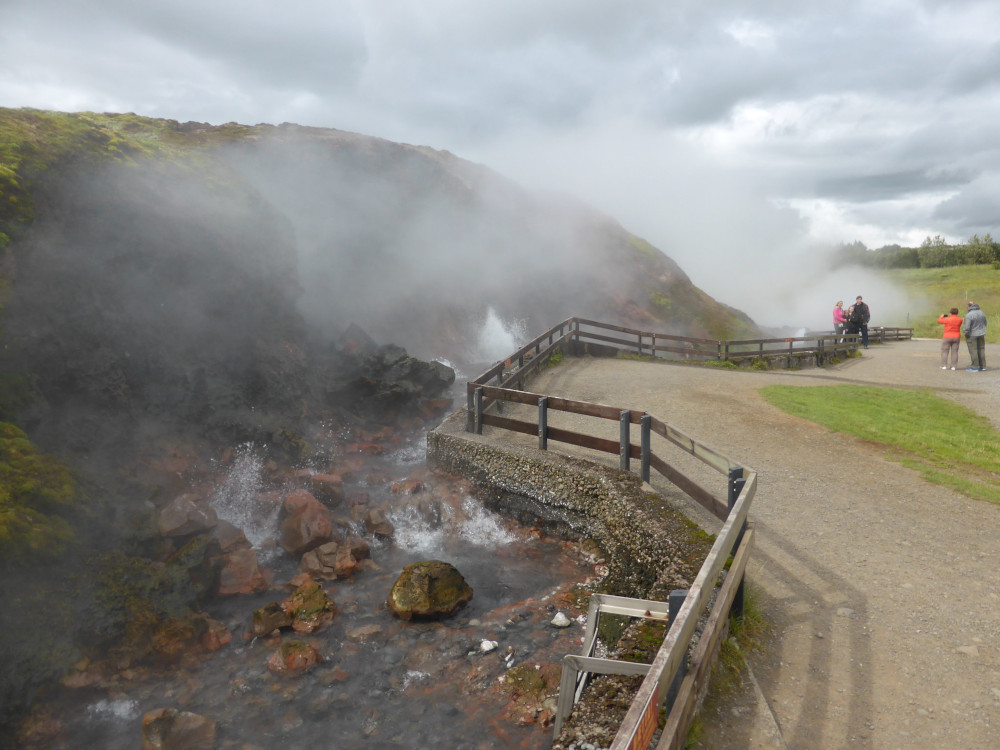
It’s style over substance. I must admit, it’s very stylish. Part of the Secret Lagoon’s charm is that it’s very rustic. Fontana is shiny but almost in a 90s way, starting to look a little worn. The Blue Lagoon is stylish in a sort of clinical-space age hybrid way. Krauma looks good. Is it the best-looking of all the spas I’ve ever been in? The Sky Lagoon is a close contender, albeit in a very different way. Krauma is all black marble, overhung by square black buildings that contain the steam room, sauna and relax room with real log fire. Shiny black walls. Just one “window” onto the real world, where you can see the hot spring and the cliff-like mountains behind, just to emphasise how nature made this place possible. I bet it looks amazing in the winter when the landscape is all snow.
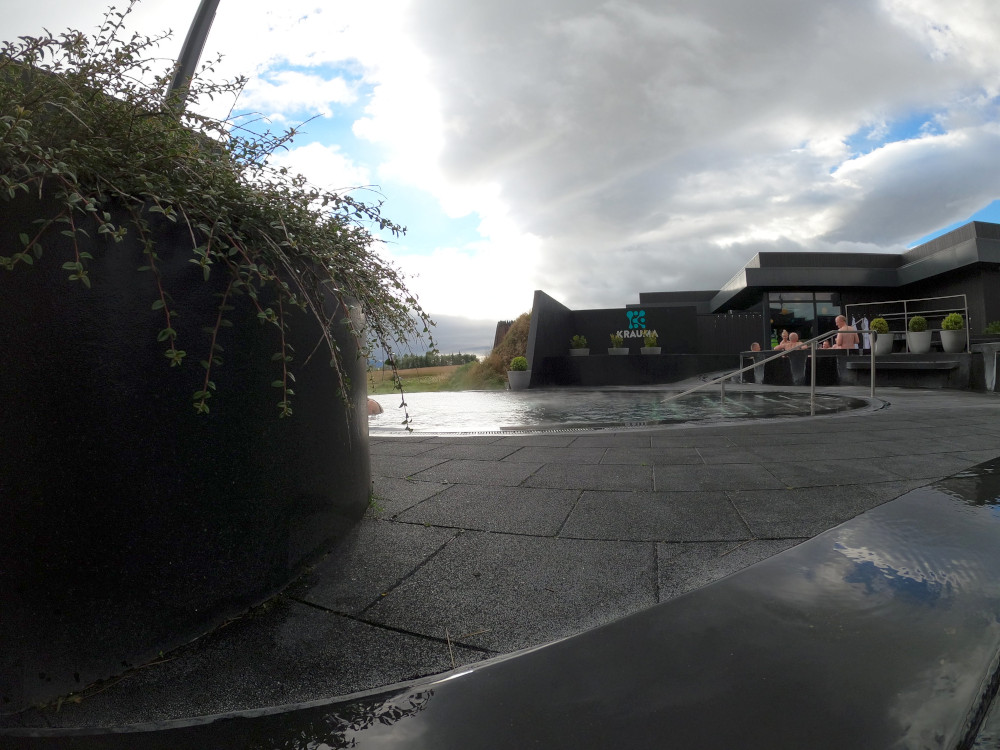
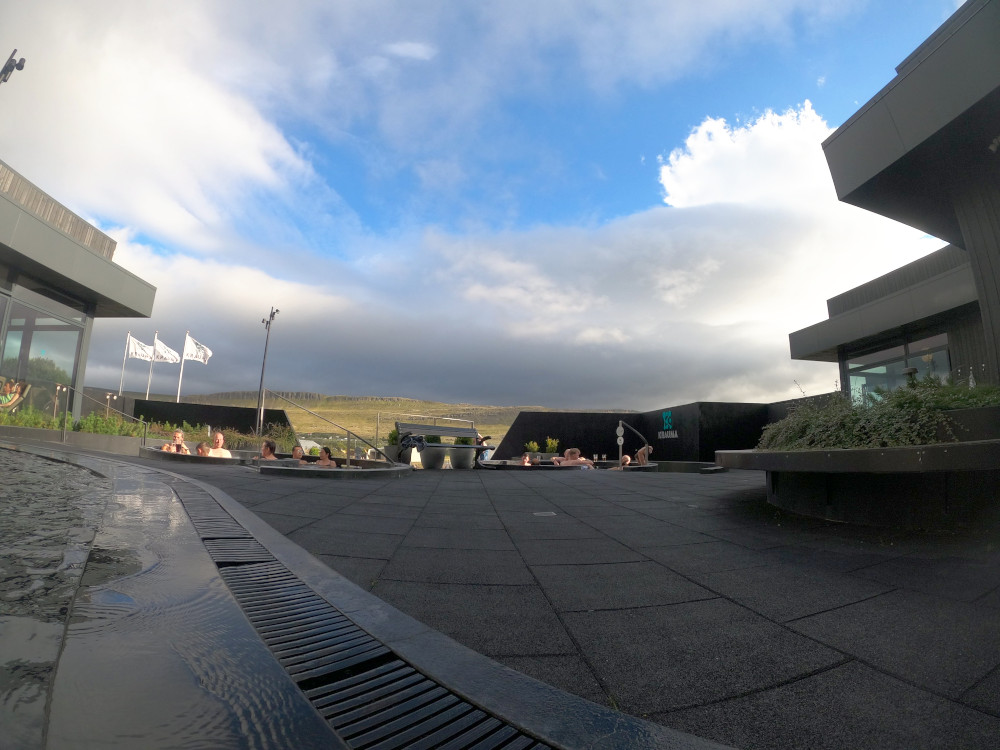
But ultimately, all you’re getting is five hot pots and a cold plunge pot that happens to be a bit prettier than normal – the cold pot is often a bit “agricultural-industrial chic”. If you go to Laugardalslaug, the big public pool in Reykjavik, you get four hot pots, a large social pot, a saltwater spa and a cold pot, plus the 50m outdoor and indoor pools. You forgive other spas because the big lagoon with the opaque water is a novelty and it doesn’t feel like you’re just overpricing everyday facilities, or because you really feel the presence of the natural hot water. I should feel the latter at Krauma. It’s right there! You have to walk past Deildartunguhver to get to Krauma and believe me, it’s not the sort of hot spring you can walk by without noticing it. But the experience at the spa just isn’t exciting enough or novel enough to feel like you’re connecting with the spring.

Oh, I don’t say I didn’t enjoy Krauma. I stayed there more than four hours! I only left because I was starving and had no idea where I was camping and wanted to get settled for the night before all the campsite receptions closed. If I’m in the area – and I do like the west of Iceland – I daresay I’ll go back and I’ll enjoy another four hours in the hot water with the view of the spring and a lingering feeling that I’ve been overcharged.
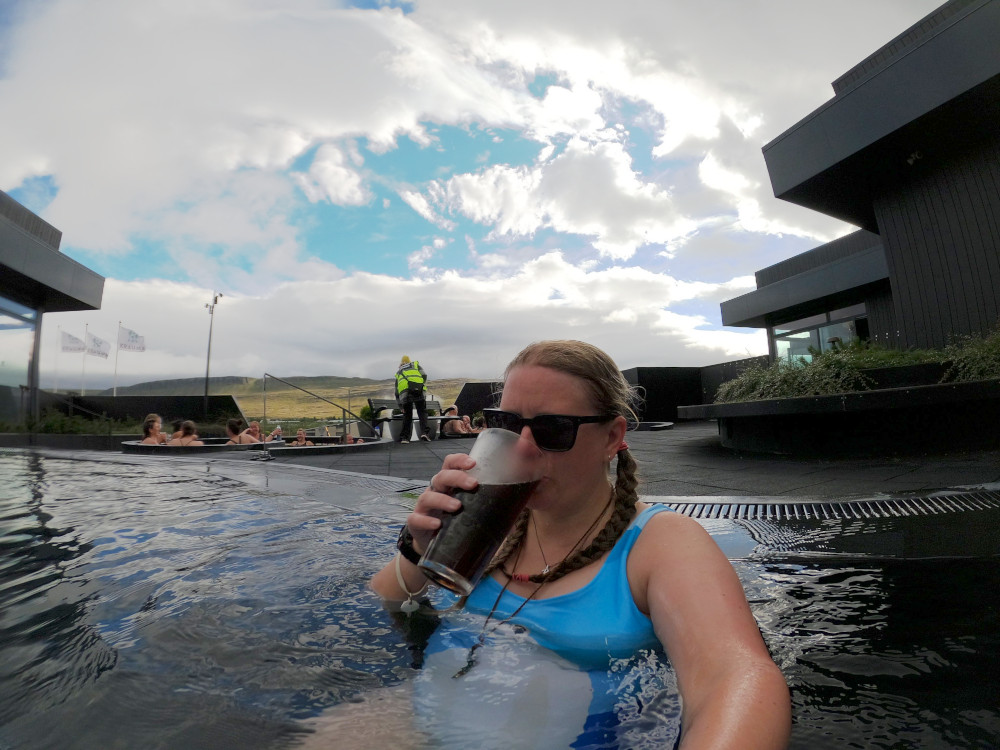
Perhaps that’s what it is. Krauma isn’t exciting enough to feel like it overpowers its location – which is a gravel car park that probably belongs to a farm. Fontana sits right there in its location, on the edge of the warm lake. The Nature Baths’ location, on the side of an active volcano, is half the magic. The Secret Lagoon is a duckpond in a village that’s been turned into something of a luxury experience and it makes you feel like you’ve stumbled on something authentic. The Blue Lagoon absolutely owns its location next to a space-age power station, in the middle of a black lava field. Krauma is a set of hot tubs on the edge of a car park.

Oh, I don’t know. Once you start questioning whether this spa is “special enough”, you start to wonder what your favourites actually have to offer. Why do I only feel this towards this one? Is because I’ve been looking forward to it for so long? Am I getting cynical in my old age? Why is Fontana any more special or worthy than Krauma?
Perhaps part of what makes Krauma special is the restaurant – when I opened my banking app this morning to find out how much each campsite cost and to compare the prices of the spas, I discovered that the transactions – one for entrance, one for buying that Pepsi – are listed under the name “Krauma Restaurant”. rather than “Krauma geothermal spa (and also we have a restaurant)”. Obviously, I didn’t sample the restaurant but for a place this shiny, I imagine it’s a half-decent restaurant, even if it’s likely the only one within fifty miles. No, it’s in the middle of the countryside in a part of Iceland that’s not quite as overflowing with tourists as other places. It does a grilled lamb, a slow-cooked cod, a burger with local beef and a vegan salad-y thing. I don’t know how much those sorts of things generally cost, let alone how much they cost in Iceland but it seems a little more expensive compared to the burgers and fish dishes at Efstidalur II, which is a farm/restaurant/ice cream cafe on the Golden Circle where I went in 2018 with my new friends from the Laugavegur trail. You can sit in the restaurant and look down on the cows that made your burger – or rather, the cows that will make burgers in the future.

But the presence of a restaurant doesn’t make Krauma special. The Blue Lagoon has a very good – or at least, expensive – restaurant attached. Fontana has a cafe where you can sample rye bread cooked in the hot springs in the sand around the lake. I think most of the others have unremarkable cafes attached. No, Krauma should stand and fall on its geothermal offering and on the whole, I don’t think it stands as well as I’d have liked.

One thought on “Is Krauma overpriced and overrated?”